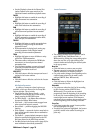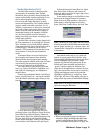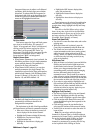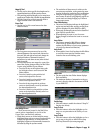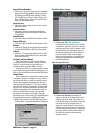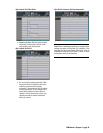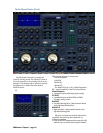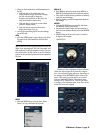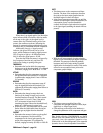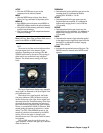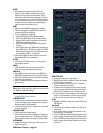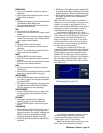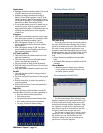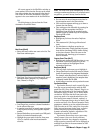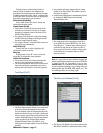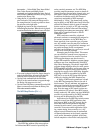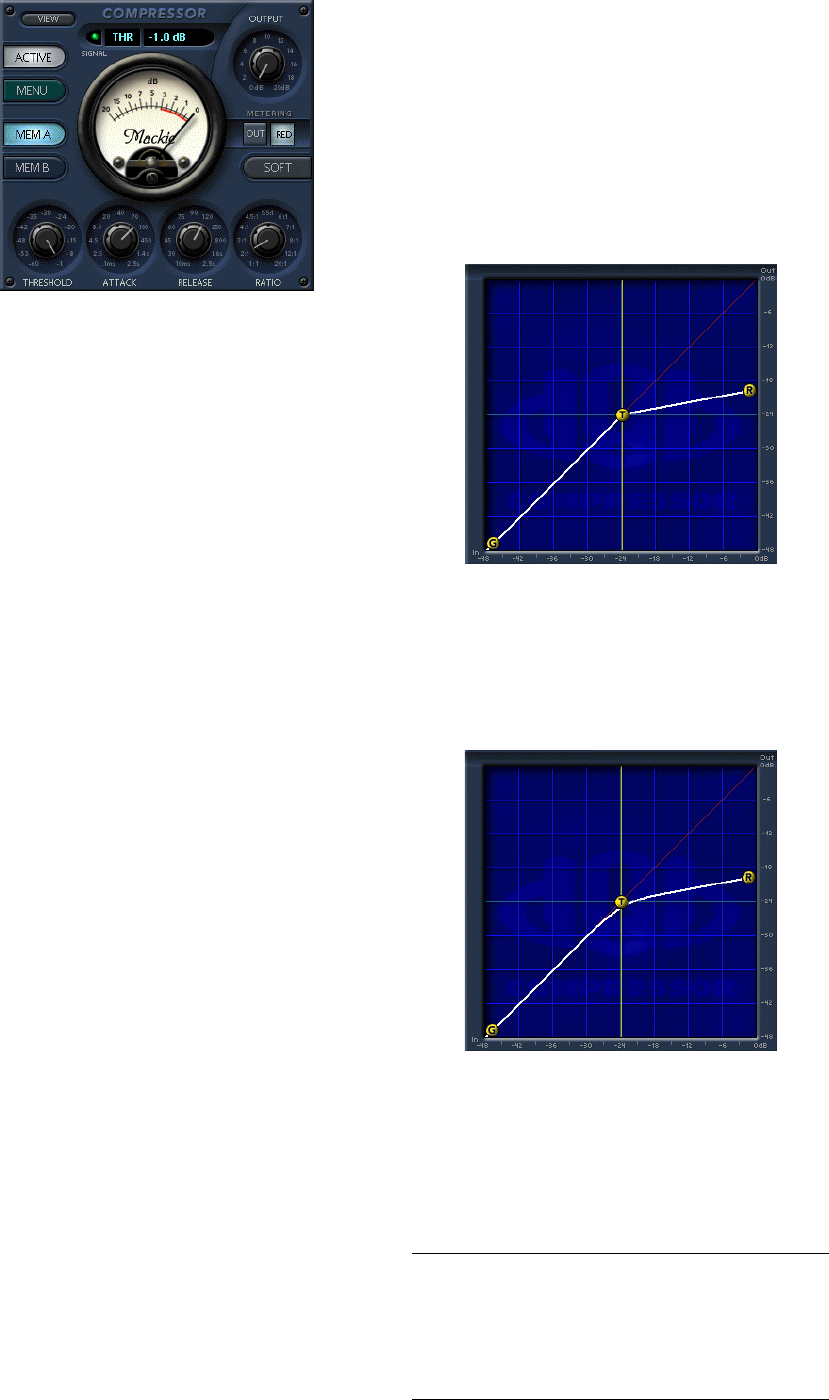
D8B Manual • Chapter 3 • page 86
When there is no signal applied, the Reduction
meter indicates 0 dB of reduction, with the needle
all the way to the right. As the signal level in-
creases above the Threshold setting of the Com-
pressor, the needle moves down, indicating the
amount of compression being applied at any given
moment in time, to a maximum of 20 dB of reduction.
Additionally, there is a “signal present”
indicator (the green LED) near the top of the
meter, which simulates an analog signal present
LED. It begins to light at –40 dB and becomes
fully lit when the signal passes –20 dB.
Note that the Reduction meter is triggered by
the Compressor function only, and does not
indicate the closing or opening of the gate.
THRESHOLD
• Determines the level at which the compressor
begins to act on the incoming signal. It is calibrated
in decibels, ranging from –60.0 dB to –1.0 dB.
ATTACK
• Determines how fast the compressor reacts once
the threshold has been exceeded. It is calibrated
in milliseconds, ranging from 0.1 ms to 2500 ms
(2.5 seconds).
RELEASE
• Determines how fast the compressor turns off
once the signal falls below the threshold. It is
calibrated in milliseconds, ranging from10.0 ms to
2500 ms (2.5 seconds).
RATIO
• Determines the change in output level as a
function of the change in input level, once the
threshold has been exceeded. The Ratio control
ranges from 1.0:1 to inf:1. Thus, if the ratio is
10:1, an increase in input level of 10 dB
(assuming the input is above the threshold level),
results in a 1 dB increase in output level.
• When set to inf:1, the compressor acts as a peak
limiter. After the initial attack time, the output
does not get any higher than the threshold.
OUTPUT
• Determines the amount of make-up gain applied
after the compressor. Use this control to
compensate for the loss of gain caused by the
action of the compressor. It is calibrated in
decibels, ranging from unity (0.0 dB) to +20.0 dB.
SOFT
• This button turns on the compressor soft knee
function. The knee of the compressor describes
the point on the input-output graph where the
threshold begins to reduce the output.
• A hard-knee compressor means that, up until the
moment the input signal crosses the threshold, no
compression occurs; once the threshold is
crossed, the full ratio of gain reduction is applied
to the input signal (assuming the attack time has
passed).
• With the soft knee engaged, the gain reduction
begins to occur before the input signal reaches the
threshold. The amount of reduction gradually
increases until the full ratio setting is reached
slightly after the threshold is crossed. This can be
seen as a curve around the knee point on the
compressor graphic display.
VIEW
• This button opens a graphical view of the
compressor and gate gain reduction curves (input
signal level vs. output signal level).
• Click and drag on the nodes in the windows to
change the parameters of the compressor and gate.
Tip: Double-click the COMPRESSOR and GATE
buttons in the Fat Channel section on the console to
open and close the expanded dynamics view.
Double-click in the blue background of the expanded
dynamics view to close the expanded view window.



